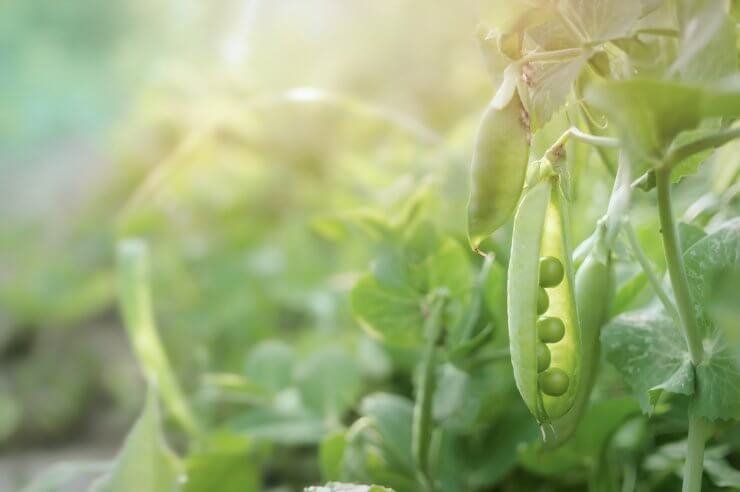
Peas in sunlight.
Pea plants can tolerate shade, but they will grow faster and more abundantly if they get at least six hours of full daily sun exposure. What’s more, full sunlight decreases the chance for pea-prone diseases, including powdery mildew, to develop. You’ll need to plant according to the sun’s daily patterns if you’ve planted in open land or in raised beds. With containers or pots, you’ll need to move your plants around to optimize the sun exposure for your plants.
Pea plants need a lot of sun because they transform sunlight into the energy they need to vibrantly grow, bloom, and bear delicious fruit. Morning sunlight is high-intensity light without the overbearing heat, so this light is best for your pea plants if you live in a southern region with an extra-hot climate.
In cooler regions of the north, afternoon sunlight works fine, even though the light intensity is less than morning light. Avoid the noon sunlight completely if you live in a temperate or hot climate zone—you might need to build shade coverings to protect your plants during the hot noon hours.
And it’s perfectly fine to expose your peas to morning sunlight, afternoon sunlight, or a combination of both—as long as the plants get enough sunlight, without getting too much.
How do you ensure that your peas get the right amount of sunlight? Do you have tips for getting your peas planted in the right spot for proper amounts of sun and shade? Please tell us how you handle sunlight for your peas.


 Previous
Previous

